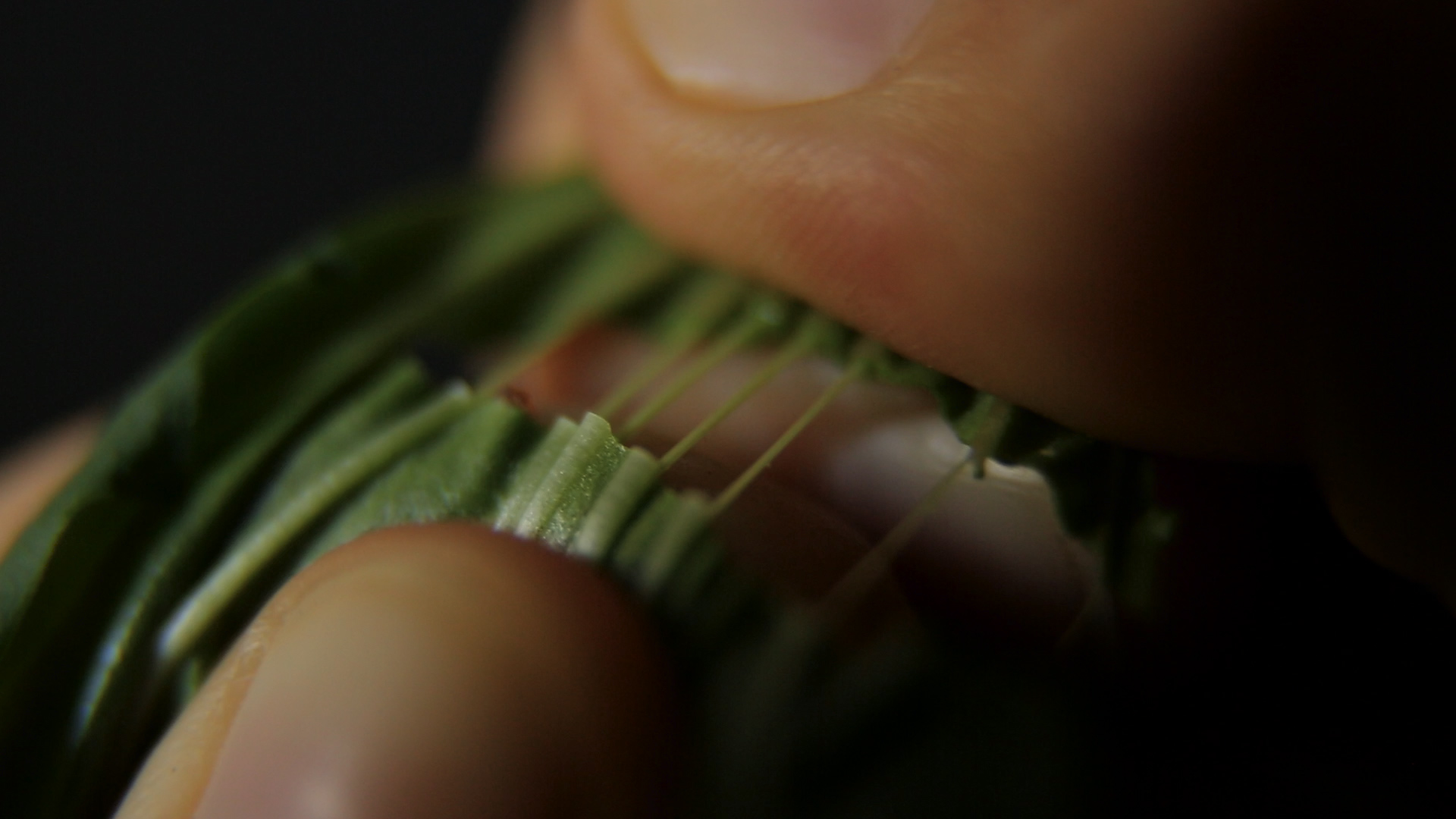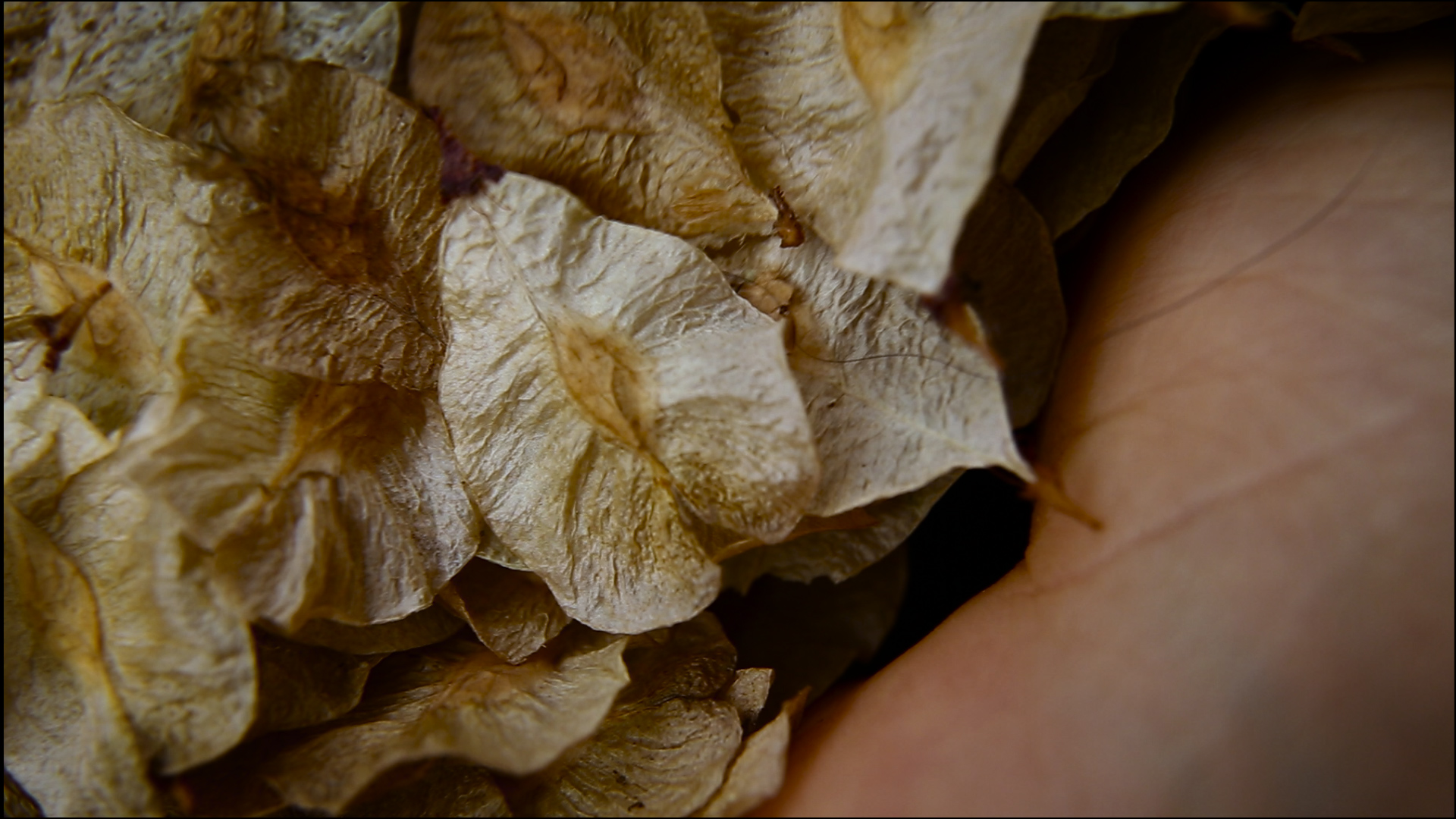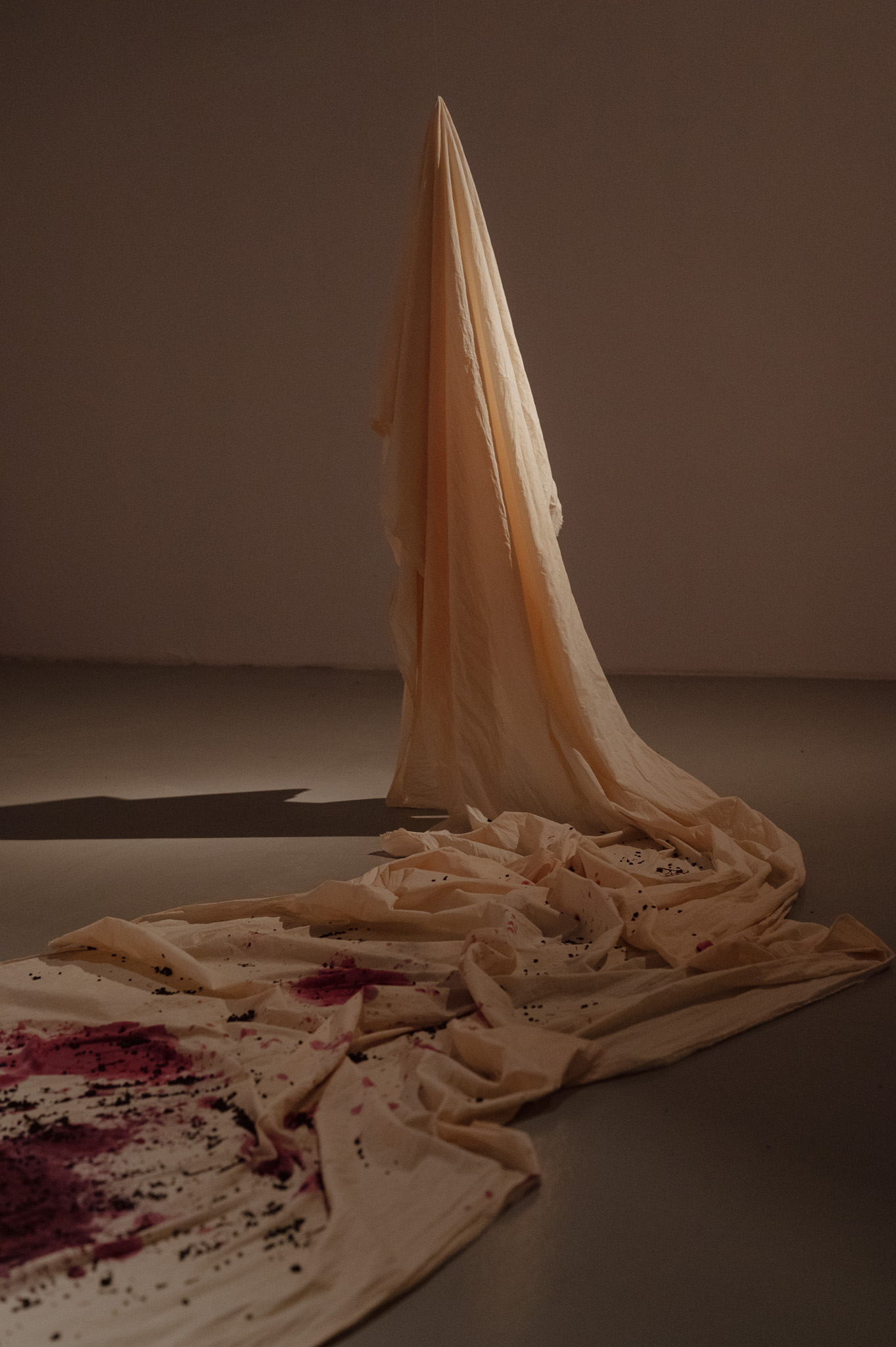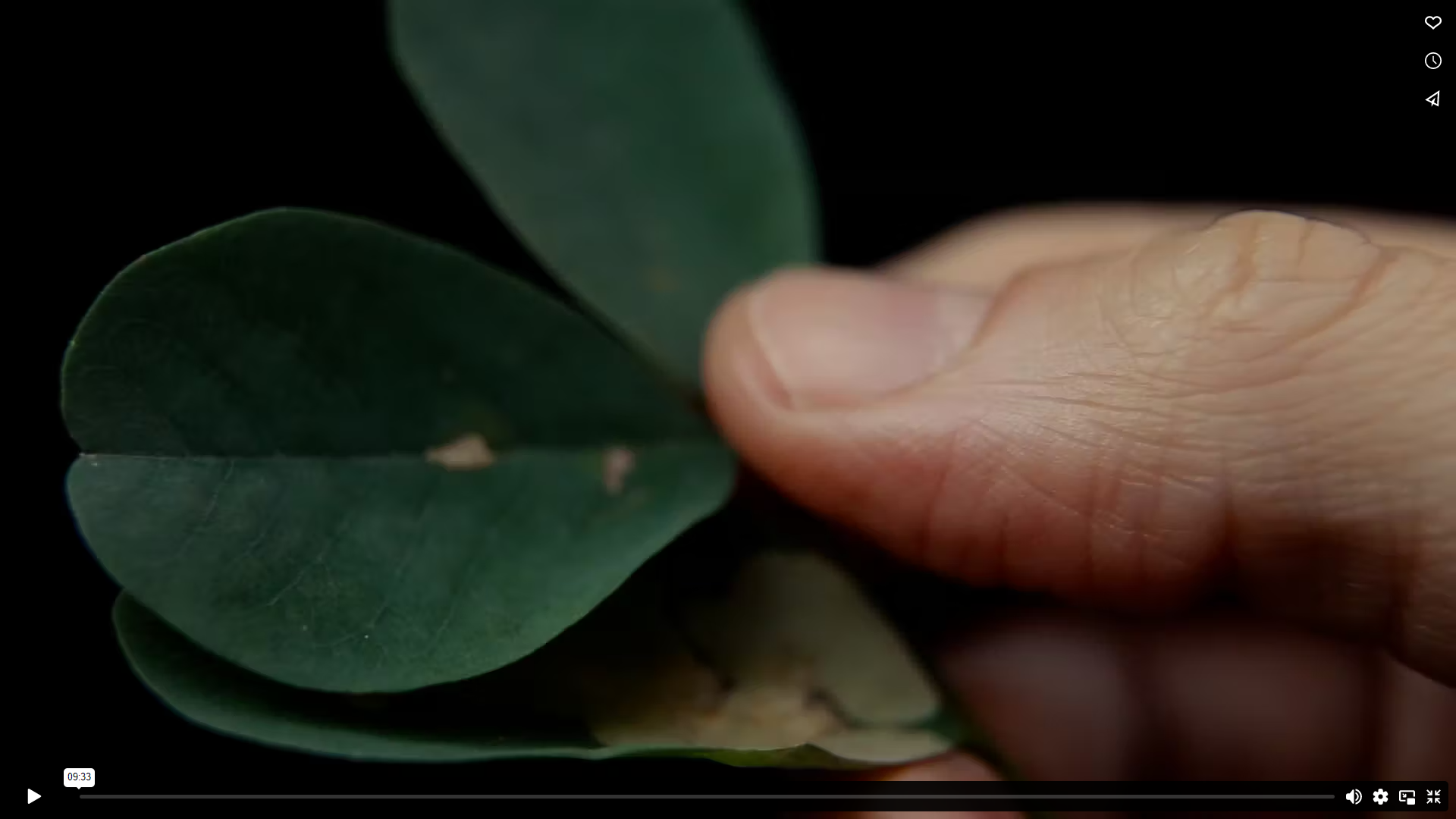2022, exhibition
Coauthors: Mateusz Olszewski (Zaumne)
A lot happens within a close touch. The body presses against the body. The human skin wrinkles, the leaf lamina breaks. Bristles and little hair bend and rustle. With stronger pressure, the veins in which the blood flows become more visible, like the nerves on a leaf lamina. The human and plant bodies intertwine to form hybrid forms. The exhibition is the result of collaboration between the sound artist and musician Mateusz Olszewski "Zaumne" and the visual artist and biologist Krystyna Jędrzejewska-Szmek. The artists conduct their observations and study plants from their closest, focusing on the performative aspect of small gestures, guided by the power of sound.
Epidermis is the Latin name for the outermost and thinnest layer of human skin. It’s the first to come into contact with the outside world – it feels, touches, recognizes, examines. It is precisely these type of sensuous experiences that guide us through the exhibition of Krystyna Jędrzejewska-Szmek and Mateusz Olszewski (Zaumne).
The first sensation evoked by the videos is sensual pleasure: the artist touches the plants, rubs bedstraw leaves, dips her hands in elm seeds, massages the creaking flowers of clover. The pleasure also comes from the sounds that amplify the closeness and realness of the experience. They were created by the artist and musician Mateusz Olszewski (Zaumne), who works with ASMR (Auto Sensory Meridian Response) phenomenon – a tingling sensation triggered by specific auditory or visual stimuli. Jędrzejewska-Szmek and Zaumna use sound, touch and image as mediums that, for a brief moment, allow us to come into intimate contact with the more-than-human world. Experiencing their works is sensual, pleasant and irritating.
Exhibited works focus on the pleasure of sensory experience, but also show a hint of scientific and research approach. The artists shift the attention to the microscale, they attune to the objects that seem tiny in their hands. To commune with them, they adapt to their micro world. Jędrzejewska-Szmek is a trained biologist, in her small artistic works she looks for sensuous knowledge – one that comes from closeness, recurring gestures, touch, smell, sound. It’s non-anthropocentric knowledge that is not grounded in theory and which concerns the more-than-human modes of knowing the world as legitimate as the typically human ones. Thinking, analyzing and writing are not privileged – rather they are available as one of many ways of learning, as good as scratching, smelling, rubbing or licking. Zaumne explores the possibilities of accessing the more-than-human world through sound – thanks to ASMR a walk in search of plants turns into an exercise in mindfulness and establishing sensuous relations with them. The soundtrack constructed by the artist makes the videos disturbingly real and close – its precision evokes the materiality of plants much better than seemingly direct and “natural” field recordings would.
Jędrzejewska-Szmek and Zaumne remind us of spontaneous enquiries carried out by everyone, already from early childhood. This type of knowing that comes from curiosity, recurring experiences and gestures, also has its important social dimension – a common practice, splitting, plucking, gathering, peeling. This is referred in the artists’ installation inspired by Ursula K. Le Guin’s 1986 essay The Carrier Bag Theory of Fiction. In it, the author compares two types of narratives: stories symbolized by the spear, which are linked to hunting, violence and individual heroics; and stories symbolized by the carrier bag, that come from community practices – collecting, sharing, telling stories. According to Le Guin the spear (and the violence that comes with it) wasn’t the key tool that enabled homo sapiens to survive and develop. The writer sides with the bag, the conch and the gourd – the items that allow to gather, share and build a relationship with the world based on cooperation rather than domination. The work that refers the essay consists of a fabric, dyed with elderberries, quotes from Le Guin, and a four-channel audio installation that plays a composition of plant audio, allowing full immersion into the exhibition space. Zaumne once again uses sound to extract the physical characteristics of plants – he extrudes from them their colors, textures and smells.
Why do we only approve specific methods of knowing the world? Can’t knowledge come from pleasure and curiosity? From close, intimate contact? We know that our sensory perception is limited and our attempts to get into contact with the world are often clumsy. We can know the texture or measure the physical attributes of burdock or waybread, get to know the smell of spruce, hear the swish of grass, but probably we will never reach their depths and never truly understand who are the other creatures that we share the world with. We are stuck with epidermic contact and experience. We don’t have other tools, so we have use those that are available.
Perhaps art is one of the non-obvious tools of perception and understanding. Science is not enough to try to get into contact with what’s beyond us – we need a mediated, esthetic experience: Zaumne’s sounds and Krystyna Jedrzejewska-Szmek’s images, that help us to attune our attention and, for a while, be closer to the world.
Text: Bogna Stefańska
Exhibition:
ŁAZNIA 1 CCA Gallery, Gdańsk
Curatorial team: Lila Bosowska & Aleksandra Księżopolska
Collaboration:
Maja Iglewska, Hanna Jedziny, Dźwiedź Kryciński, Malwina Wasilewska-Stefańska
Graphic design: Karolina Król
Epidermis video: https://vimeo.com/816829251







